Humayun's Tomb
built 60 years before the Taj Mahal, is the final resting place of the Mughal emperor Humayun and is located in the Nizamuddin East area of Delhi and is the first garden mausoleum in the Indian subcontinent. Humayun's Tomb is a major historical and tourist destination of Delhi, which attracts a large number of history lovers. Humayun Tomb displays the love of a wife for her dead husband. Incorporating Persian and Mughal architectural elements, this garden mausoleum was built in the mid-16th century in memory of the Mughal emperor Humayun by his first wife Haji Begum. Humayun's Tomb - Delhi's Mughal Masterpiece. Intriguing yet Interesting Facts about Humayun's Tomb. Humayun's Tomb Near By Metro Station.
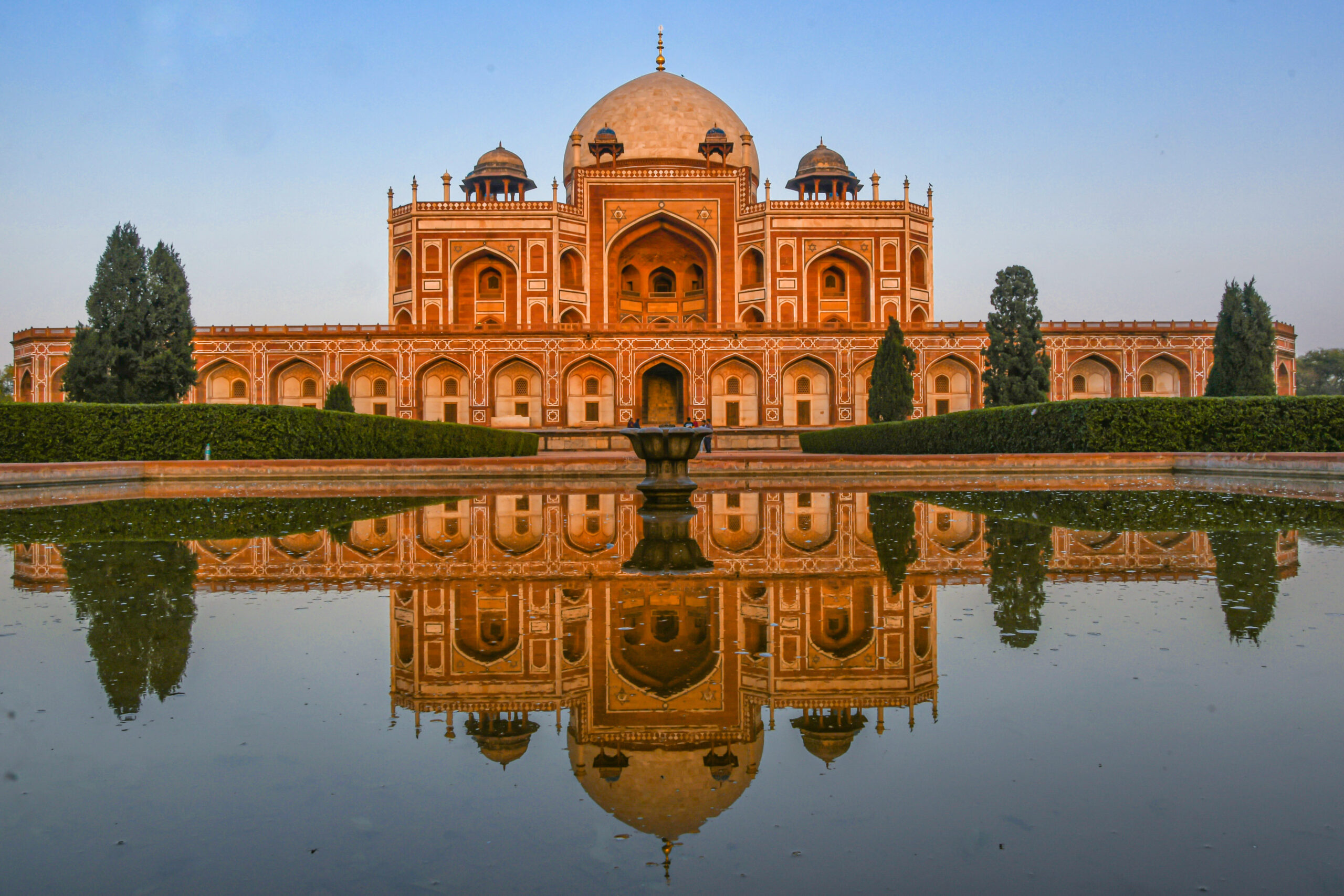
About Delhi's Most Beautiful Historical Building
- The most special thing about the Humayun Tomb is that it is one of those structures of that time in which red sandstone was used on such a large scale.
- Due to its magnificent design and glorious history, the Humayun Building was included in the UNESCO World Heritage List in the year 1993.
- The architecture of Humayun's Tomb is so attractive that no one can remain without seeing it.
- This magnificent tomb is situated in the middle of a large ornate Mughal garden and its beauty increases significantly during the winter season.
- Humayun's Tomb is located on the banks of the Yamuna River and is also home to the remains of other Mughals, including their wives,
- Sons and descendants of the later emperor Shah Jahan, as well as many other Mughals.
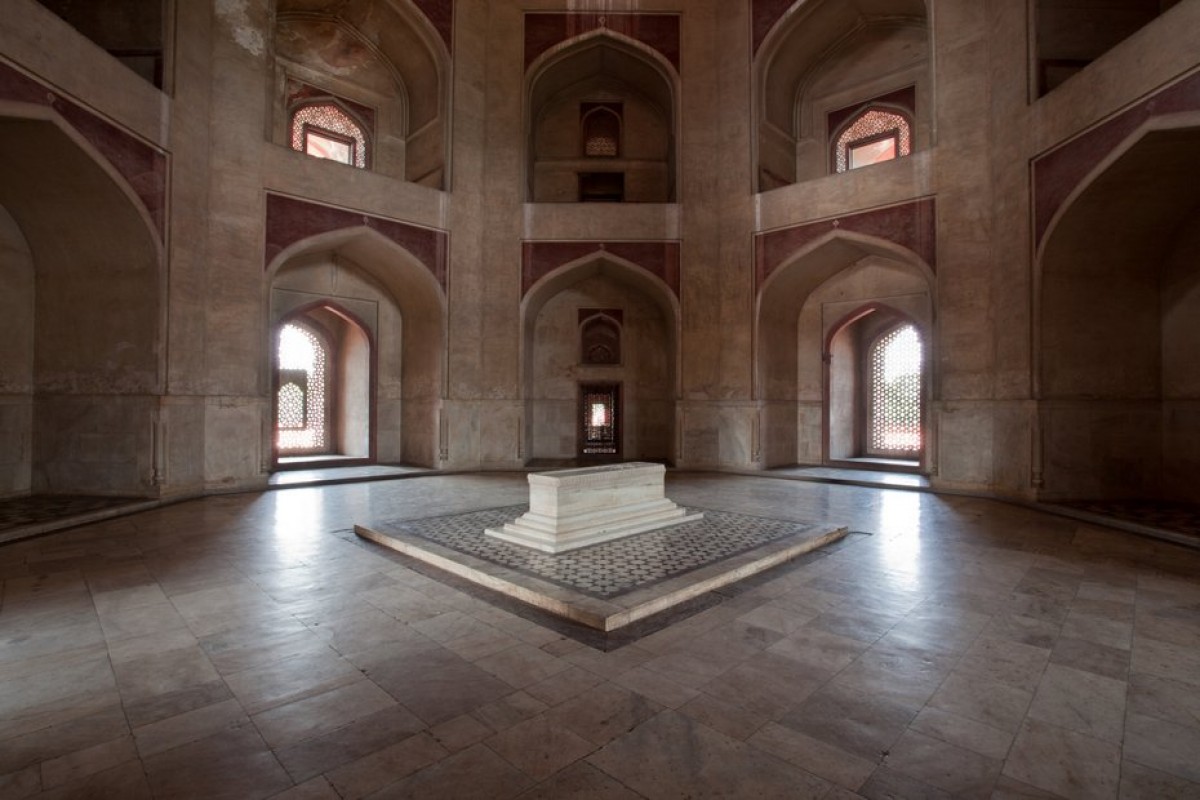
History of Humayun’s Tomb:
- After Humayun's death on 20 January 1556, his body was initially buried in the Purana Qila in Delhi.
- The emperor's death deeply distressed his chief patron Bega Begum who vowed to build the most powerful mausoleum in the empire.
- The construction of the tomb began in 1565, nine years after Humayun's death, and was completed in 1572 AD.
- The construction of this mausoleum was completed for Rs 1.5 million at that time which was borne by the Maharani alone.
- During the partition of India, the Humayun along with Purana Qila served as a refuge for Muslims when they migrated to Pakistan.
- The glory of Humayun's Tomb increased when it was included in the UNESCO World Heritage List in 1993.
Architecture of Humayun’s Tomb:
- The structure of Humayun's Tomb is a blend of Islamic and Persian architecture making the tomb a fine example in red sandstone and white marble.
- Let us tell you that this mausoleum is also the first Indian structure to incorporate the Persian double dome, which is 42.5 meters high,
- Where the outer structure supports the marble exterior and leads into the inner poetic interiors.
- Entering the structure through the south entrance you can see the heavy lattice and stone latticework.
- The body of Mughal emperor Humayun is buried here under the white dome.
Char Bagh Garden Humayun’s Tomb:
- Char-Bagh is a Persian-style garden, which has a geometric layout and is divided into 4 square walkways, hence the name Char Bagh.
- In this garden, four squares are divided into smaller pathways, making 36 squares.
- This garden is divided into two parts by a water body.
- There is a wall of stone pieces or debris on three sides of this garden and Yamuna does not flow on the fourth side.
Humayun's Tomb Other Monuments in The Complex:
Tomb and Mosque of Isa Khan; This is the tomb of Isa Khan Niazi who was an Afghan nobleman in the court of Sher Shah Suri. He was an opponent of the Mughals and fought against them. This octagonal mausoleum was built during the reign of Islam Shah Suri, son of Sher Shah. This mausoleum is surrounded by an octagonal garden and later Isa Khan's family was also buried at this place.
Bu Halima’s Tomb and Garden; The tomb of Bu Halima is situated towards the western entrance of the Humayun Tomb. Little is known about Bu Halima and the tomb is a later addition to the site.
Afsarwala Tomb and Mosque; Afsarwala was an aristocrat in Akbar's court and his tomb is situated towards the south-west end of the Humayun Mughal building. The tomb also has a nearby mosque which is believed to be dedicated to Afsarwala. Let us tell you that these structures were built during the period 1566-67 CE.
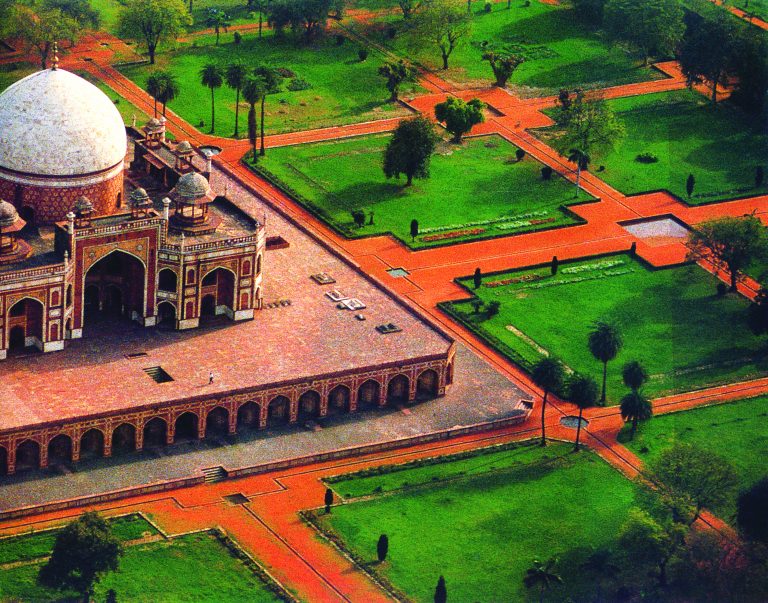
Nila Gumbad
Nila Gumbad; Just outside the boundary of the tomb complex is the Blue Dome, decorated with blue tiles. The most special thing about this unique structure is that it is octagonal and has a square inside. Neela Gumbad was built by Abdul Rahim Khan-e-Khana, who was a courtier in Akbar's court for his servant Mian Wahim.
Chilla Nizamuddin Auliya; Chilla Nizamuddin Auliya was meant to serve as the residence of the Patriarch of Delhi, Nizamuddin Auliya, and is located just outside the complex.
Humayun’s Barber’s Tomb; Humayun's Barber's Tomb is situated towards the south-east corner of the Char Bagh. Although there is no evidence as to whose tomb this is, but the local people here believe that this tomb belongs to Humayun's barber.
Humayun’s Tomb Ticket Price:
The entry ticket to the Humayun for Indian travellers is Rs 35. For tourists from BIMSTEC and SAARC countries, Humayun's Tomb ticket also costs Rs 35. There is no entry fee for children below 15 years of age.
Best Time to Visit Humayun’s Tomb:
- The Humayun Building is a famous historical and tourist destination located in Delhi.
- The best time to visit Delhi is from October to March.
- It is very hot in Delhi, the temperature goes up to 42 degrees, so it is not advisable to come here at this time.
- Temperatures drop slightly during monsoon, but rains may hamper your sightseeing plans.
- Therefore, the winter/spring season is the best month to visit Delhi.
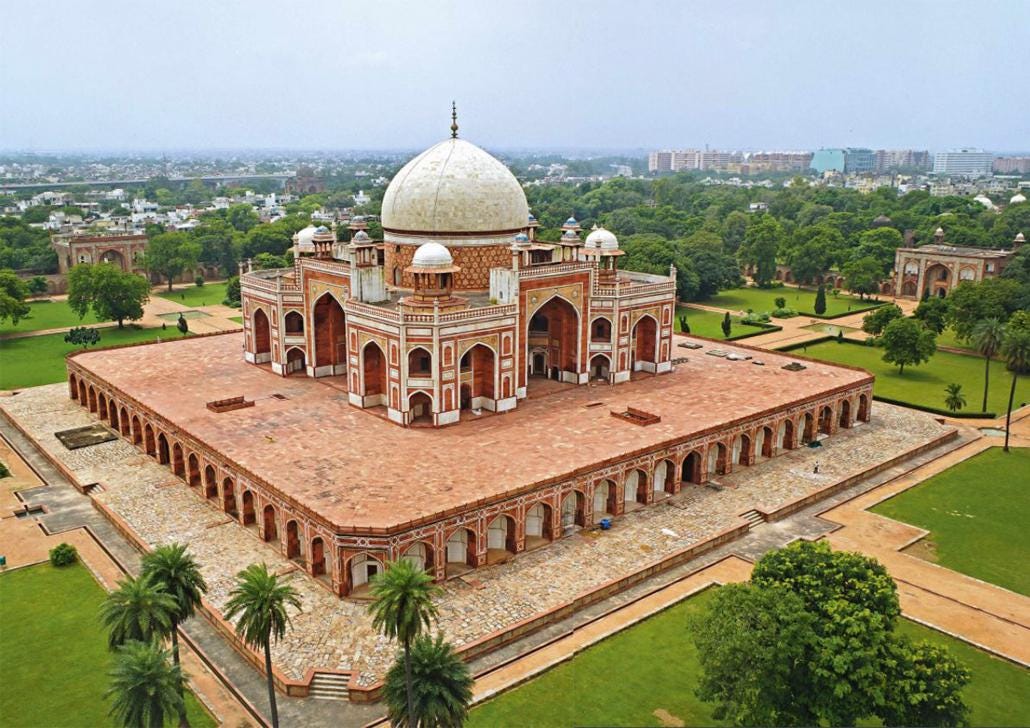
How to Reach Humayun’s Tomb:
- Humayun Tomb is located at a distance of 2.8 kilometres from Nizamuddin Railway Station.
- Taxis, buses and auto rickshaws are available from outside the station.
- This tomb is very close to Sarai Kale Khan Bus Depot which is situated at a distance of about 8 kilometres.
- Auto rickshaws are available outside the bus stand.
- The nearest metro station to this tourist spot is Jawaharlal Nehru Metro Station on the Violet Line.
How to Reach the Tomb Of Humayun By Train:
- Delhi has four main stations – Delhi Junction also known as “Old Delhi”, New Delhi in central Delhi, Hazrat Nizamuddin in the southern part of the city and Anand Vihar in the east.
- Delhi Junction and New Delhi railway stations are connected by Metro Line 2, while Anand Vihar is connected by Metro Line 3.
- Hazrat Nizamuddin is the departure point for most southbound trains and Anand Vihar handles most of the eastbound services.
- Taxis and buses are available outside all stations to take you to different parts of the city.
Humayun's Tomb Opening Days:
Humayun Tomb is open on all days of the week.
Humayun’s Tomb Timings:
The time to visit Humayun's Tomb is between sunrise and sunset.
Hope this article was helpful to you and help you in gaining some knowledge. Comment Below and give some feedback
Don't Forget to Share this topic with your Friends. You can share this on Facebook, Twitter and You can also E-Mail.
Get Related Places to visit by clicking Here.
Please don't forget to Bookmark This site and get back Again. We keep Adding Valuable Content every day. So Please don't forget to Subscribe to our News Letter. If you are interested in cooking, check out our cooking section by clicking Here.
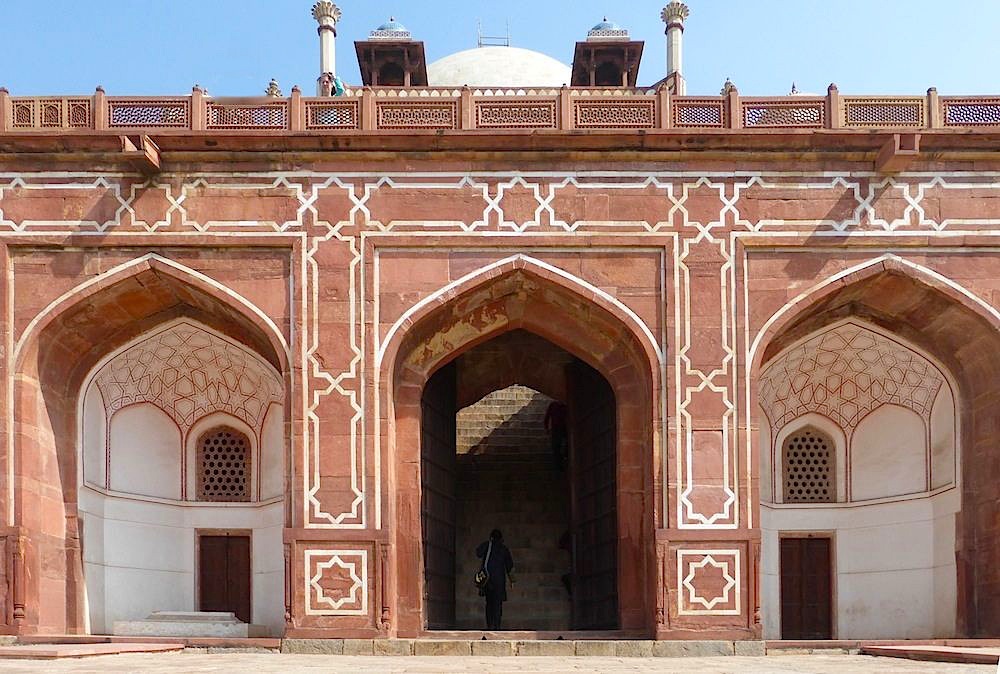
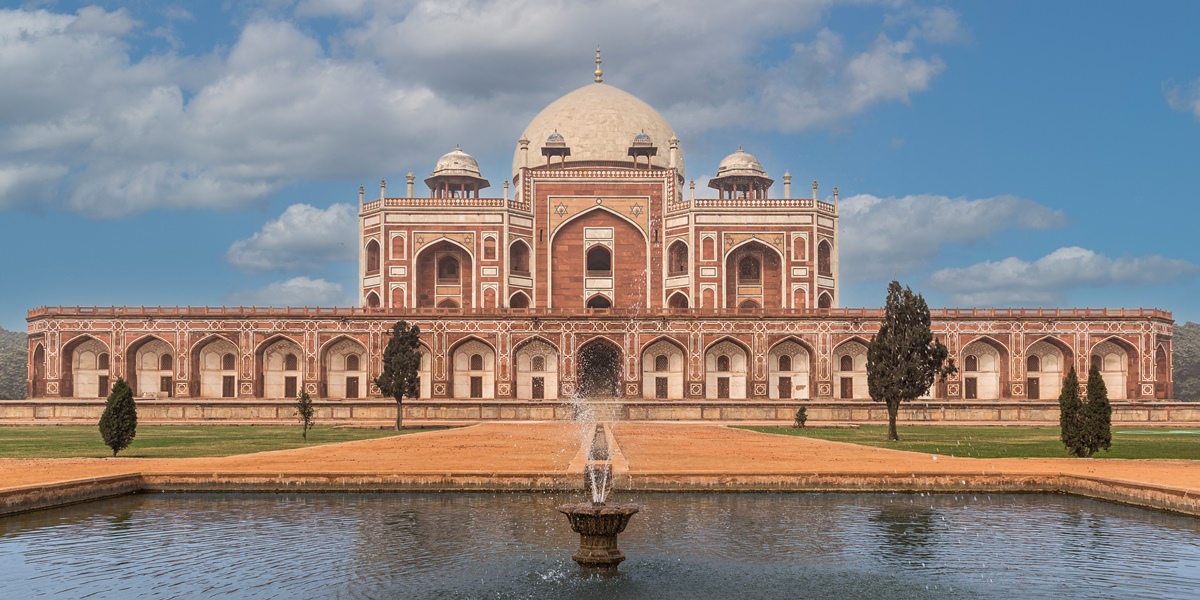
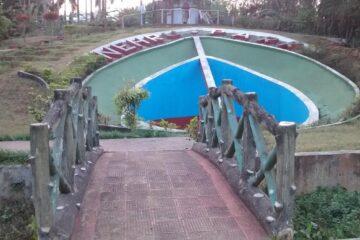
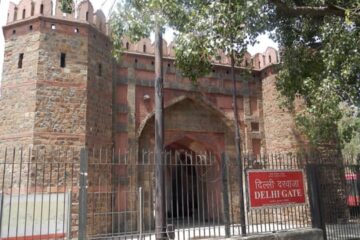
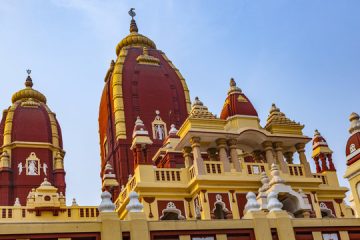
0 Comments